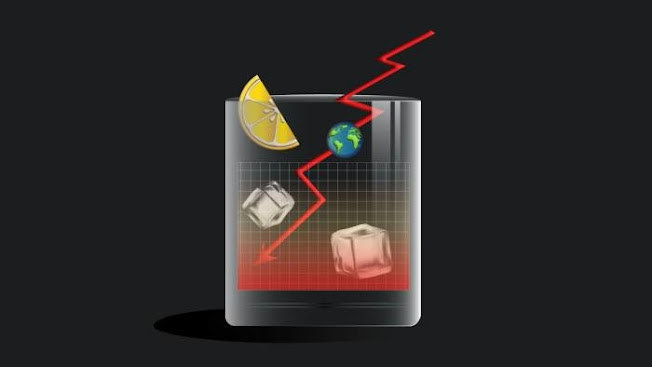The market in Treasuries is storing up trouble
Questions raised by policymakers are a sign of mounting unease about American government bonds
Gillian Tett
This month, global investors have watched the wild gyrations of gilts — and British politicians — with mounting horror.
But now that UK bond markets seem calmer — if not UK politics — investors should peek look across the Atlantic at the unfolding story in the $23.5tn world of American government bonds.
Back in March 2020, the Treasuries market nearly froze up amid a trading ruckus. Disaster was only averted when the Federal Reserve dramatically intervened to buy bonds (presaging the recent move by the Bank of England).
Today, surface conditions seem calm — at least compared to gilts — and policymakers are (rightly) emphasising that the US economy is far stronger than the UK one.
Plus, US politicians have not made quite such crazy fiscal mistakes. At least, not yet.
But underneath this surface veneer, some nasty currents are swirling in the Treasuries world.
A JPMorgan index of Treasury market liquidity has recently deteriorated to the lows seen in March 2020.
A separate Bloomberg index suggests the situation could be even worse.
Meanwhile the Ice-BofA Move index of implied Treasury market volatility is also hovering near March 2020 levels, while buyer demand at auctions is weakening.
More striking still, these trends recently prompted Janet Yellen, US Treasury secretary, to take the rare step of admitting in public that she is “worried about a loss of adequate liquidity in the market”.
On Friday her staff did something remarkable: in a regular market survey, they asked the Treasury Bond Auction Committee (the bankers who run bonds sales) if the government should start buying less-liquid Treasuries, to prevent them freezing up.
As it happens, this idea was recently floated in a TBAC report, which is peppered with eye-popping charts showing the liquidity crunch.
But most bankers presumed buybacks would not occur because that would complicate the Fed’s efforts to end quantitative easing.
So the fact the Treasury is now likely to introduce this is a telling sign of the mounting unease.
Why is this occurring?
In part because of generalised investor angst.
A Bank of America survey this week shows that 31 per cent of asset managers view liquidity conditions across asset classes as “poor” — a level last seen in March 2020, or 2008.
However, the Treasuries market is also plagued by particular challenges.
One is size: US government outstanding issuance has almost doubled since 2015 and quadrupled since 2007.
US Treasury market growth has significantly outpaced the growth in bank capital since 2008.
This is a remarkable — and little noticed — shift.
Another problem (echoed elsewhere) is that quantitative tightening is raising questions about who will buy government bonds as the Fed stops buying Treasuries.
As a punchy paper by economists including Raghuram Rajan and Viral Acharya recently noted, with masterly understatement, this QT is “not likely to be an entirely benign process”.
Investors are skittish.
The third problem is market structure.
Previously, the primary dealers (ie big banks) kept the treasuries market liquid in a crisis by acting as market makers.
But after 2008, a string of regulatory reforms made it expensive to play this role — most notably by demanding reserves against Treasury holdings.
As a result, primary dealers’ transactions are now just 2 per cent of the market, down from 14 per cent in 2008, TBAC data shows.
Worse still, a mere 13 per cent of cash Treasuries transactions occur via central clearing platforms, according to the Securities and Exchange Commission.
This is 50 per cent lower than a decade ago; the rest occurs in electronic trading and repurchase trades.
This matters.
As David Schwimmer, head of the London Stock Exchange recently told me, one little-noticed reason for the recent gilt dramas is that UK pension funds were given an exemption from mandatory clearing (until next year).
Similarly, the low proportion of cleared trades in Treasuries was one factor contributing in the near-disaster in 2020.
So can this be fixed?
Not easily.
Next month, US regulators will meet to discuss structural reforms, and they have already made some changes: the SEC has (sensibly) called for measures to force more of the market onto cleared platforms; reporting of bilateral trades has improved; the Fed has agreed to backstop the repo market in crisis.
But the ugly truth is that these reforms are still proceeding at far too timid and slow a pace to remove the structural risks, particularly given that QT is plunging us into uncharted waters.
Thus the market remains saturated with moral hazard: although many investors are aware of these structural risks, most also assume that the Fed will yet again become the buyer of last resort if a crisis erupts.
This might be a sensible bet.
But no one knows for sure.
Either way, it is also a lousy state of affairs for a sector that is supposed to be a pillar of free financial markets — and (ironically) establish the risk-free rate for dollar-finance, and thus much of the global system.
So let us all hope that next month’s meeting of regulators forcefully accelerate the pace of reform.
If not, QT could create even more liquidity stress, and mean that last week’s British turmoil could eventually be a prologue to a much bigger American market drama if (or when) new economic shocks hit.

0 comments:
Publicar un comentario